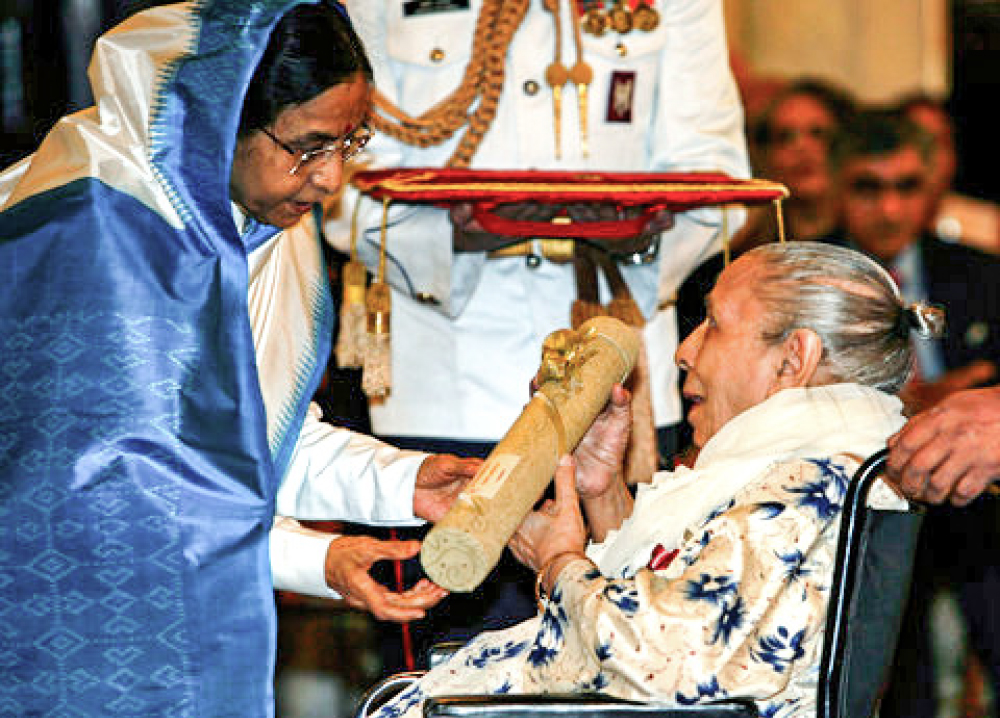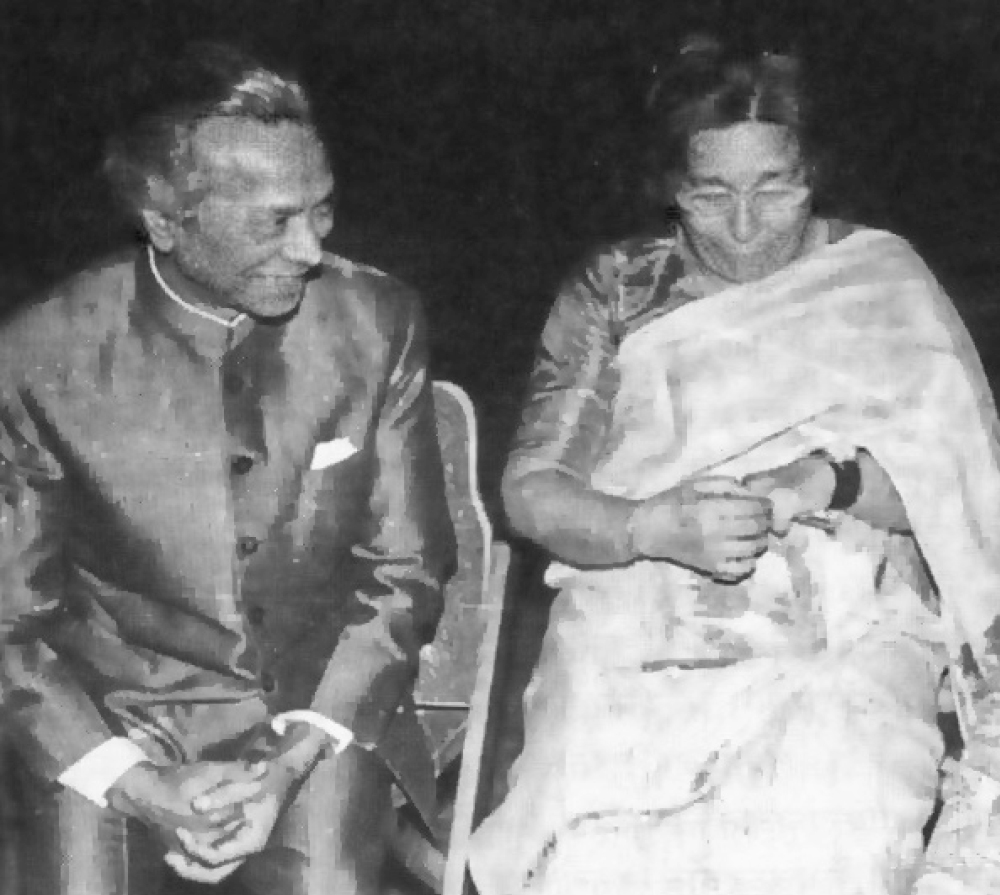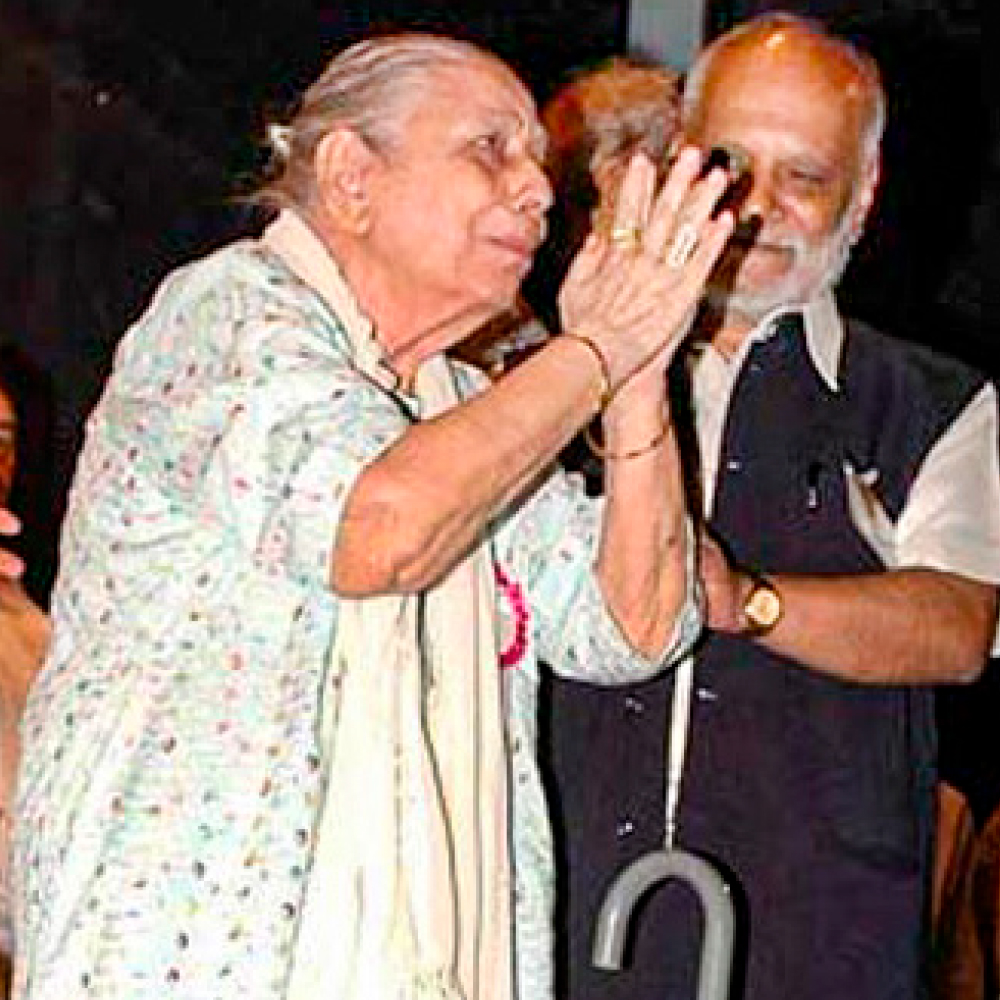Shamshad – the first female superstar of playback singing
She commanded a fee of ₹1,000 per song in the 1940s, when Lata Mangeshkar charged ₹50 per song.
Her voice — sprightly, expressive and one of free-wheeling abandon — had a charisma of its own. It could give any song a twinkle. It was so powerful that the mike had to be kept some distance away! Shamshad Begum captivated music lovers on the radio even before Bollywood’s playback era. She was in fact the first female playback singer and the first female superstar of Bollywood music.
Shamshad sang a few thousand songs in Hindi, Marathi, Gujarati, Punjabi and Bengali. She stimulated the careers of composers like Naushad, O P Nayyar, C Ramachandra and Madan Mohan. Most Shamshad songs have been adopted into remixes, the most popular being kajra mohabbatwala.
During the 1930s and 40s, Shamshad was the barometer of quality for female singers just as Saigal was a model for male singers.
During the 1930s and 40s, Shamshad was the barometer of quality for female singers — they were supposed to sing like her, just as Saigal was a model for male singers. For many years, she was the brightest star of a constellation that included Noor Jehan, Kanan Devi, Suraiyya, Amirbai Karnataki, Khursheed, Rajkumari and Zohrabai Ambalewali. Her peak period was between 1940 and 1955.

Shamshad was born on April 14, 1919 in Lahore, a day after the bloodshed in Jallianwala Bagh. Her father was a mechanic. She had five brothers and three sisters. Baby Shamshad would sit in front of the horn of the gramophone, listen to the songs and start crooning. Her musical talent impressed her school principal, who got the young girl to lead morning prayers in school. At 10, she started singing folk-based songs at religious functions and family marriages.
In 1957, Mehboob Khan wanted a full-throated voice for Mother India, and he urged Shamshad to end her seclusion. Result: she sang four splendid songs for Naushad in this magnum opus.
Her uncle Amiruddin told her father that Shamshad’s voice was god’s gift, and she should become a professional singer. But those days women from good families didn’t sing commercially. When Shamshad was 13, Amiruddin took her to meet composer Ghulam Haider, who served Jenaphone Recording Company. He liked her voice and her promise as singer. She signed a contract for a dozen songs at the rate of ₹12.50 each. Her father agreed to her singing but laid down a diktat: “Only go for singing, don’t get your photographs taken, don’t attend any parties and come home straightaway after the recording.” The daughter once said she followed these rules throughout her singing career.
Shamshad got no formal training in music. But Ghulam Haider’s method of training was “hundred times more effective than the formal method and was akin to the polishing of a diamond,” she said.
Shamshad started singing for AIR Lahore and Peshawar from 1937. She sang several hundred devotional and romantic songs and acquired a huge fan following, but unfortunately, none of these songs was recorded, and were lost for posterity. She also sang for a few Punjabi films. A few of them celebrated silver jubilees.
In 2004, Shamshad read her own obituary. Saira Banu’s grandmother Shamshad Begum, also a singer, passed away, and some newspapers mixed up the two Shamshads!
A major landmark in her career was the Hindi film Khazanchi (1941), in which Ghulam Haider created a vibrant music score incorporating the dholak and Punjabi beats. The song Sawan ke nazaren hain was a rage. It was filmed on a feisty gang of young boys and girls cycling and singing. Shamshad’s voice rang out with characteristic insouciance.
The makers of Khazanchi held a music competition in Pune for those who could sing two songs from the film. The winner? A girl named Lata Mangeshkar! She sang two Shamshad solos from the film.

Shamshad’s career took a leap when Naushad, all praise for the “transparency” in her voice, signed her on for a series of films — Anmol Ghadi (1946), Shah Jehan (1946), Dard (1947), Mela (1948) and Dulari (1949). Shamshad beguiled listeners with the songs Udan khatole pe ud jaoon (Anmol Ghadi), Hum dard ka afsana (Dard) and Dhartiko akash pukare (Mela). She was often Nargis’s voice: the two strengthened each other’s impact.
Naushad showcased the singer’s brilliance and versatility in Babul (1950), one of Bollywood’s most enchanting musicals, He got her to sing as many as eight songs — from the plaintively haunting Duniya badal gayi to the sweetly romantic Milte hi aanken dil hua (both duets with Talat) and the sparkling bridal song Chhod babul ka ghar.
But what some critics regard as Shamshad’s best solo, Kahe koyal shor machaye re, was heard earlier in Raj Kapoor’s debut production Aag (1948), for composer Ram Ganguly.

When Shamshad seemed to be at the pinnacle of her career, the Lata cyclone hit the industry in 1949, with Mahal and Barsaat. Composers Shankar-Jaikishen, who revolutionised film music with Barsaat and Awara, adopted Lata as their all-purpose singer. Once derided for her “thin voice”, Lata gradually became the gold standard for all composers —including Naushad for whom Shamshad had rendered many hits.
The story goes that Naushad once told Mehboob Khan about the success of his music for Andaaz (produced and directed by Mehboob). It was raining heavily then. Mehboob pointed at the rain and said “It seems as if Barsaat has washed away Andaaz.” Apparently, Barsaat washed away many careers too!
But Shamshad did render some glorious songs in the 1950s and 1960s — for Aan, Deedar, Naghma, CID, Naya Daur, Mother India, Mughal-e-Azam, Kismat etc.
Her voice and style were ideal for O P Nayyar, who specialised in songs of hope, banter, romance and joy. He likened Shamshad’s voice to a temple bell. In CID (1956), an OP Nayyar triumph, Kahin pe nigahen (filmed on a dancing Waheeda) was a typical Shamshad classic. So was the breezy and brilliant Leke pehla pehla pyar (sung along with Rafi and Asha).
A personal tragedy severely impacted Shamshad’s career: the death in 1955 of her husband Ganpat Lal Batto in a road accident. She had fallen in love with him and married him in 1934 at the age of 15, despite severe opposition from parents on both sides on religious grounds.They were a devoted couple. His sudden death devastated Shamshad. She said she didn’t want to sing any more.
But in 1957, Mehboob Khan wanted a full-throated voice for Mother India, and he urged Shamshad to end her seclusion. Result: she sang four splendid songs for Naushad in this magnum opus: two solos — Holi aaye re aayi and Pi ke ghar aaj pyari dulhaniya chali — and two group songs — O gaadiwale (with Rafi), and Dukh bhare din beete rebjaiya (with Rafi, Manna Dey and Asha Bhosle).
Here’s a recap of some of Shamshad’s best songs:
Aana meri jaan meri jaan Sunday ke Sunday (Shehnai, 1947): Whistles, mouth organ, rock-and-roll, comedy, raunchy lines — Bollywood’s first westernised song composed by C Ramchandra had it all. Shamshad sang along with Meena Kapoor, and with Ramchandra himself — in this rollicking hit.
Mere piya gaye Rangoon (Patanga, 1949): A racy romantic song rendered on heroine Nigar Sultana, who says she looks forward to a telephoon call from her beau in Rangoon. Composer: C Ramachandra.
Milte hi ankhen dil hua (Babul, 1950): Talat and Shamshad delight with their vocals and Naushad weaves his magic, as Dilip on the piano and Munawar Sultana romance each other.
Duniya badal gayi (Babul, 1950): Is the zing in Shamshad’s voice suited only for peppy naughty songs? Listen to Shamshad and Talat in this haunting song of romantic heartbreak.
Saiyan dil mein anare (Bahar, 1951): Heroine Vyjayanthimala sings this melodic gem about her beloved in Shamshad’s vocals — one of the early hits of S D Burman. This song is one of the best-remembered hits of the 1950s.
Bachpan ke dil bula na dena (Deedar, 1952): A tonga-beat song that is the best-loved of all Lata-Shamshad duets. Filmed on two kids played by Tabassum and Parikshit Sahni. Composer: Naushad.
Hai jaadugar balma (Naghma, 1953): This single song immortalised composer Nashad (not to be confused with Naushad). Like a sweetheart who seems prettier at each visit, this 70-year-old song is more irresistible each time you listen to it!
Leke pehla pehla pyar (CID, 1955): Music lovers have never stopped humming this feisty breezy beach duet rendered with panache by Shamshad and Rafi for O P Nayyar.
Reshmi salwar udta jali ka (Naya Daur, 1957): A scintillating stage dance filmed on Kum Kum and Minoo Mumtaz, rendered by Asha and Shamshad for O P Nayyar. Cheers and whistles from the audience enhance the joyous abandon of the song.
Teri mehfil mein kismet azmakar humbhi dekhenge (Mughal-e-Azam, 1960): This Lata-Shamshad duet for Naushad is one of Bollywood’s classiest qawwalis, and a feast for ears and eyes.
Kajra mohabbatwala (Kismat, 1968): O P Nayyar pulled Shamshad out of nowhere to render this hilarious duet with Asha Bhosle. It is filmed on Babita (in male garb) and Biswajit (playing a woman). Shamshad sings for Biswajit. She showed she had lost none of her magic.
Shamshad gradually faded away, thanks partly to her reclusiveness and lack of self-promotion. She never appeared in public and didn’t allow herself to be photographed. In 2004, Shamshad read her own obituary. Saira Banu’s grandmother Shamshad Begum, also a singer, passed away, and some newspapers mixed up the two Shamshads!
In 2009, she was honoured by the Indian government with a Padma Bhushan. The same year, she won the O P Nayyar Memorial Award.
She died in 2013 at the age of 94, in the Mumbai home of her daughter and son-in-law. Lata Mangeshkar said in a rich tribute that she could never match Shamshad’s voice or natural talent.
The author is a senior journalist and a member of the Rotary Club of Madras South




